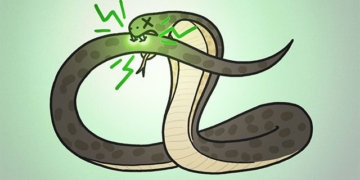Despite the fact that no one has captured or found the body of Bigfoot (also known as Sasquatch), the government of Johor state in Malaysia declared over the weekend that Bigfoot is considered a state asset, and no one is allowed to harm, capture, transport out of the state, or kill this legendary creature.
The Johor government’s announcement was not made lightly. Two weeks ago, Berita Harian reported that a group from the Department of Wildlife and National Parks (known in Malay as Perhilitan) had captured a juvenile Bigfoot near the town of Kota Tinggi. The newspaper quoted villagers from Felda Tenggaroh 2, stating that at the end of March, about 20 people in four muddy four-wheel-drive vehicles stopped by a local eatery for lunch. Some members of the group boasted to the salesgirls that they had just caught a juvenile Bigfoot after it was subdued with a tranquilizer gun in the Jalan Mersing area of an ancient forest near Singapore.
NO PHOTOS TAKEN
Half skeptical, the salesgirls questioned whether it was a “mawas” (the Malay term for an ape-like creature), to which the men insisted it was indeed Bigfoot. They even attempted to take the girls to see it, but the vehicle carrying the juvenile Bigfoot had already left (!). According to villagers, this group might be poachers. The newspaper also reported that a trader in Kota Tinggi claimed to have seen this group driving a vehicle registered to Perhilitan. He mentioned seeing a large creature through the car window but could not identify it due to the black tape covering the window. He requested to take a photo of the creature with his mobile phone, but this was denied.
After the article was published, the local Perhilitan branch summoned the salesgirls for more details. Additionally, Datuk Musa Nordin, the head of Perhilitan, refuted the newspaper’s claims. He stated that Perhilitan had not sent any staff to that area at the time mentioned and dismissed the possibility of a juvenile Bigfoot being captured.
However, according to Bloomberg, at the end of March, the Johor government planned to send a scientific expedition to search for signs of Bigfoot in the aforementioned ancient forest this April. Prior to this expedition, a reconnaissance team consisting of forest rangers, conservation officers, and local Orang Asli people was sent to clear a path. The Johor government made this decision because last year, a group of loggers reported seeing three large creatures, including two adults and one juvenile, moving like humans near a riverbank at the edge of the Johor forest reserve.
This news has revived stories about Bigfoot that local indigenous people often share with each other. The Orang Asli people claim that the Endau Valley, where they reside, was once the homeland of “Serjarang Gigi,” giant hairy forest dwellers. Abdul Ghani Othman, the Chief Minister of Johor, believes that Bigfoot exists in the sacred forests of his state because the indigenous people do not lie.
SEARCHING FOR A NEEDLE IN A HAYSTACK
Vincent Chow, a member of the Malaysian Nature Society, also believes that some Bigfoot may still exist in Malaysia, as he has photographed and closely studied giant human-like footprints found in the ancient forest bordering Singapore. However, Chow admits that searching for Bigfoot is much like “searching for a needle in a haystack,” as the Malays would say.
Nevertheless, some people suspect that the stories about Bigfoot in Johor are merely a ploy to attract tourists, both domestic and international. These individuals cite the statement from Freddie Long, the head of the Johor Tourism and Environment Committee, who indicated that even if it is a legend, Bigfoot still “holds immense tourism potential.” June Rubis, 29, a member of the Malaysian Wildlife Conservation Society who has studied primate species in Malaysia for the past five years, expressed skepticism: “It’s really hard to believe.”
Regardless, the Johor government’s declaration to protect Bigfoot has garnered praise from the BFRO, an international organization dedicated to researching Bigfoot worldwide: “Johor’s proactive step has shattered the assumption that no government could declare Bigfoot protected unless at least one hunter had a specimen in hand.” According to the BFRO, other countries should take a “historic step” like Johor. They lament that some countries, including Nepal, Tibet, Bhutan, India (where Bigfoot is referred to as Yeti, the snowman living in the Himalayas), China, Russia, the US, and Canada, have not taken seriously the information about Bigfoot provided by their citizens.
Vincent Chow Sasquatch |
The US and Canada are indeed considered the homeland of Bigfoot, which locals often refer to as Sasquatch, meaning “wild man.” According to thousands of accounts from what are regarded as serious witnesses, the homeland of Sasquatch lies in the forests of Western Canada and the Pacific Northwest of the United States. Most unexpected encounters occur in this region. Sasquatch is so famous that there is a village in Canada – Harrison Hot Springs – that claims to be the “homeland of Sasquatch.” Here, there is a giant wooden Sasquatch statue erected right on the main road leading into the village. In this area, as well as many others, Sasquatch has entered the realm of folklore. This North American “wild man” is described as a primate standing between 6.5 to 8 feet tall, covered in shaggy reddish-brown or black fur, with very large feet resembling those of humans (hence the name Bigfoot). |
D.H.ANH



















































